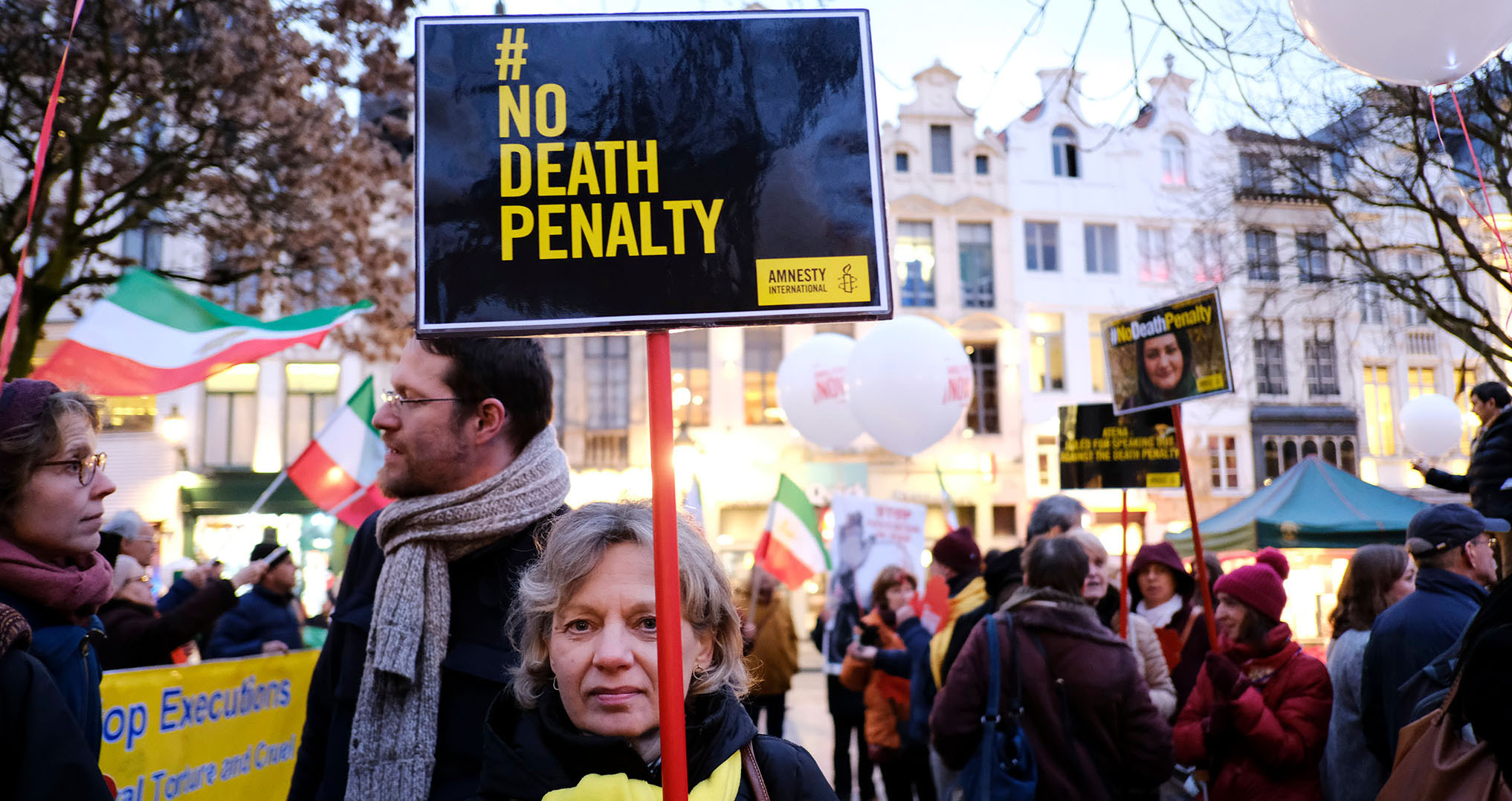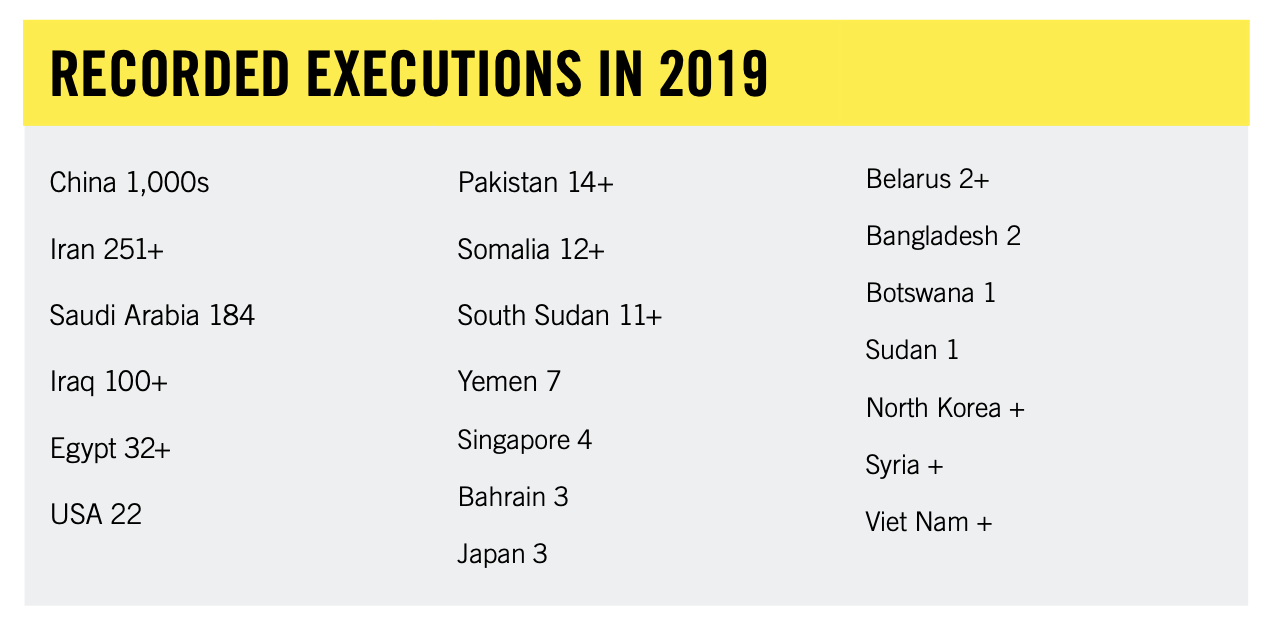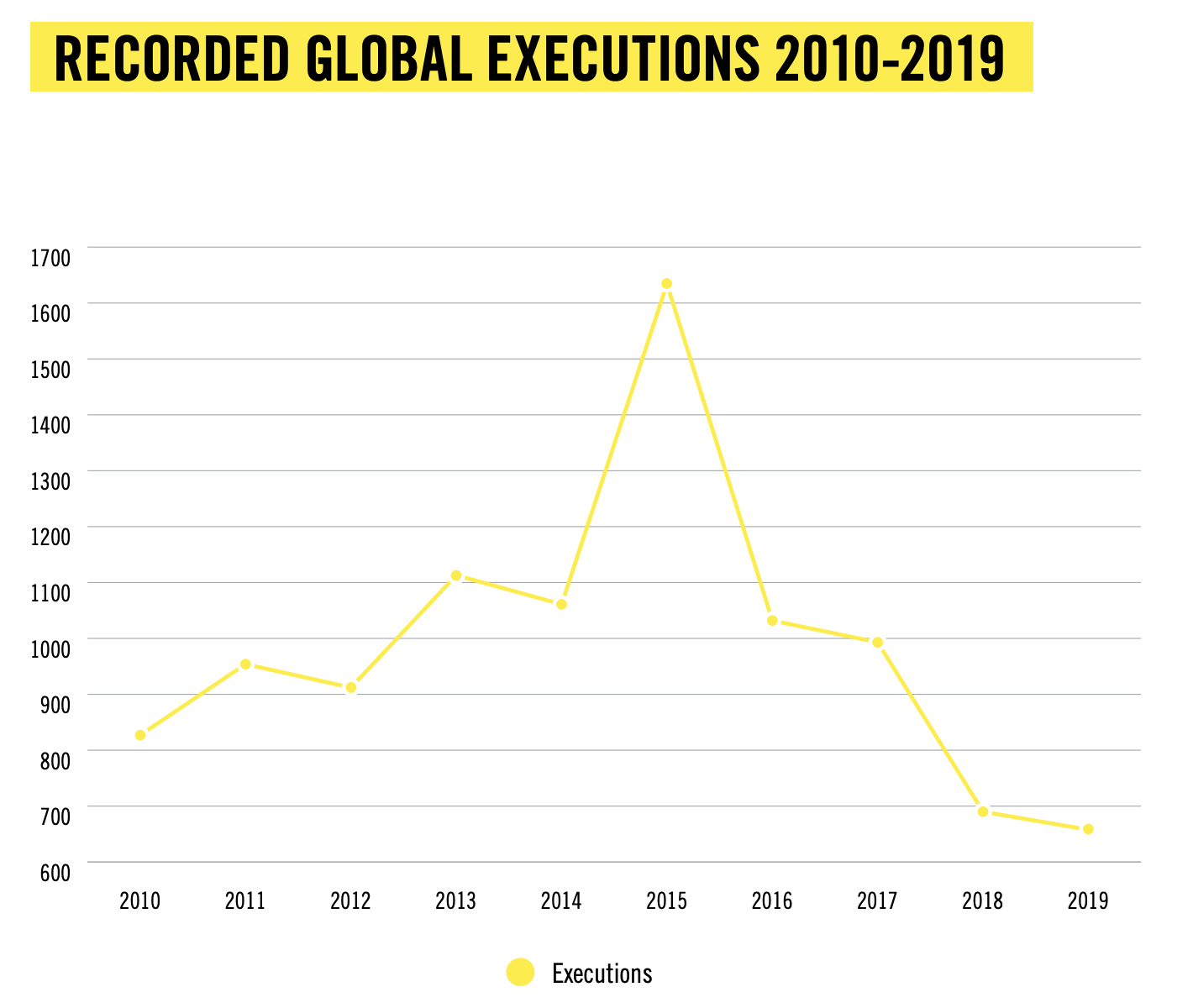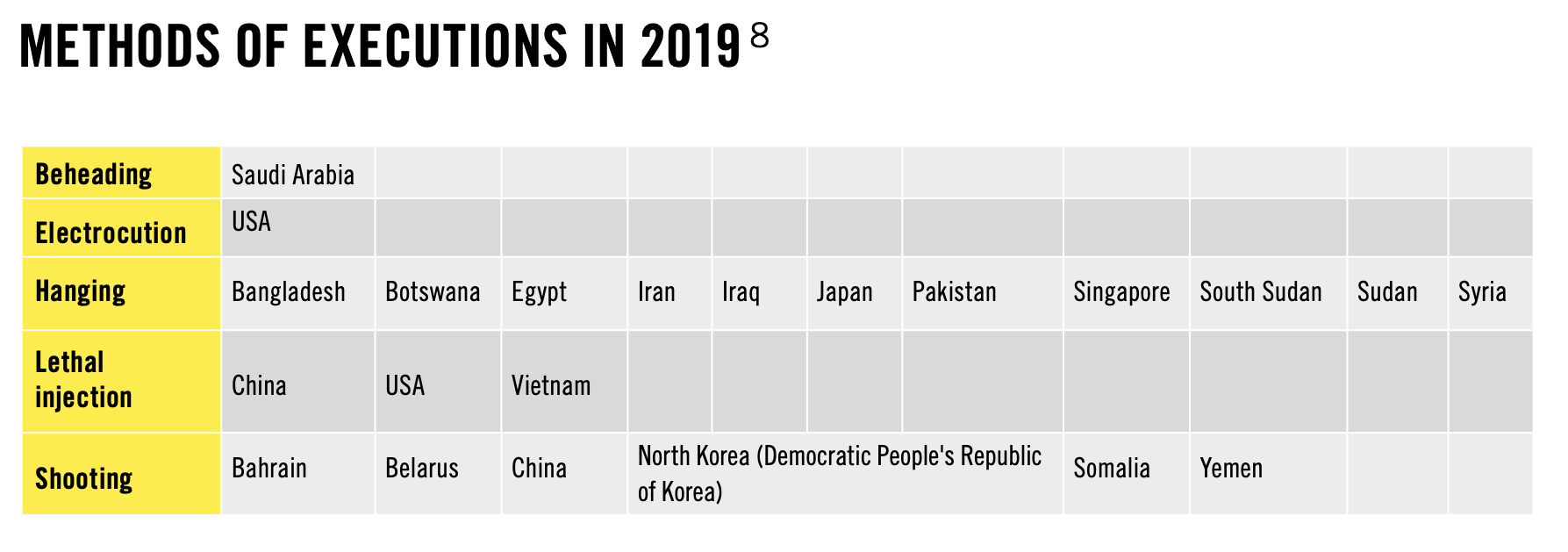Global trends of death penalties and executions

Activists protesting against executions, Brussels, Belgium. Photographer: Alexandros Michailidis (Shutterstock, 2019).
Global trends of death penalties and executions
 (Amnesty International, 2020).
(Amnesty International, 2020).
It should be noted that the statistics presented in this article, referenced from Amnesty International’s Death Sentences and Executions 2019 report, are those officially reported as judicial sentences, and exclude extrajudicial executions. It is believed that the number of executions is in fact significantly higher than those reported, indicated with a + symbol. Particularly in China, execution figures are thought to be substantially under-reported due to the classification of the death penalty as a state secret in the country, and are believed to actually be in the thousands. Other countries where the full extent of executions remains hidden are North Korea and Viet Nam (Amnesty International, 2020).
The report showed that cases of execution had decreased by 5% compared to the previous year, from 657 (2018) to 690 (2019). This trend follows a global reduction in executions since 2015, the result of a plethora of reasons. Of course, ongoing efforts by organizations to put an end to this punishment are gaining results evident in the reduced numbers (Amnesty International, 2020).

(Amnesty International, 2020).
Furthermore, socio-political factors affect the trend. The amendments made to Iran’s anti-narcotics law in 2017 corroborates with a decrease in executions for a second consecutive year. However, Iran still remains the country with the second highest number, accounting for 38% of the global total. Contrastingly, some countries showed an increase in executions. In Saudi Arabia, the increase in executions showcases the use of the death penalty as a weapon of war, implemented in the conflict against the Shi’a dissidents (Amnesty International, 2020).
As well as the, sometimes, dubious evidence to support the sentencing of death penalties, as with Rezaiee, creating adversity towards the use of the punishment, the nature of executions are also considered inhumane. Methods of execution are beheading, electrocution, hanging, lethal injection, and shooting. These methods are not only unjust, but they also strip the offender of their dignity (Amnesty International, 2020).

(Amnesty International, 2020).
On the December 16, 2020, a significant step was taken in tackling the use of the death penalty, when the united Nations General Assembly adopted a new resolution for a moratorium on the use of the death penalty. The moratorium, which the World Coalition Against the Death Penalty has been campaigning for over a decade, hopes to abolish the use of the death penalty internationally (World Coalition Against the Death Penalty, 2020). As it stands, 106 countries have banned it whilst in 56 countries the law is active and enacted. The remaining countries still have death penalty laws. However, they either have not been used in ten years or more, or are only enacted in exceptional cases (BBC, 2020b).

Article by
Costadina Tsoukala-Steggell

Categories
Action against death penalty, Categories, Human rights, Statistics


